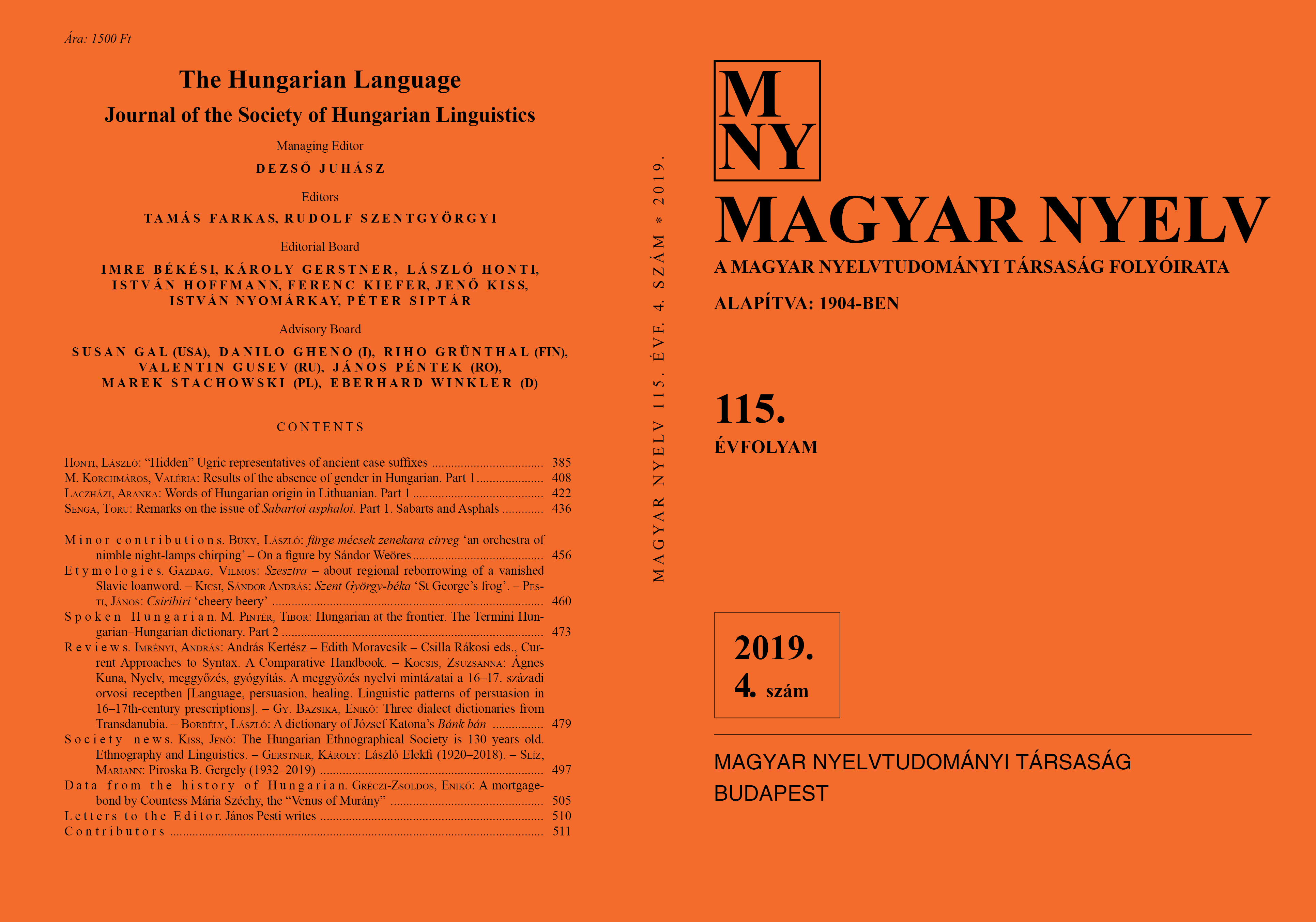Remarks on the issue of Sabartoi asphaloi
Part 1. Sabarts and Asphals
DOI:
https://doi.org/10.18349/MagyarNyelv.2019.4.436Keywords:
Sabartoi asphaloi, De administrando imperio, ethnonymsAbstract
The expression Σάβαρτοι ἄσφαλοι occurs twice in Constantine Porphyrogenitus’ De administrando imperio. As for its posterior constituent, the claim that the Emperor of Byzantium would use the plural of ἀσφαλής in the form ἄσφαλοι rather than the gramatically correct ἀσφαλεῖς is far from being probable. I submit that the expression is a double denomination like Κουτρίγουροι Οὖννοι or Οὖννοι Σάβειροι. In the view of Byzantine scripturists, it consists of two ethnonyms, sabartoi and asphaloi. These two peoples must have been related to each other by some ethnic, political, or other links, and Byzantine scribes coupled the two names on that basis, subsequently making it refer to a single group of people, the Hungarians. This interpretation of the mysterious expression may be the first step towards clarifying what ethnic groups might have been hidden behind the two names represented in the Greek alphabet.
Downloads
Published
Issue
Section
License
Copyright (c) 2024 Toru Senga

This work is licensed under a Creative Commons Attribution-NonCommercial-NoDerivatives 4.0 International License.
Magyar Nyelv is a Diamond Open Access periodical. Documents can be freely downloaded and duplicated in an electronic format, and can be used unchanged and with due reference to the original source. Such use must not serve commercial purposes. In the case of any form of dissemination and use, Hungarian Copyright Act LXXVI/1999 and related laws are to be observed. The electronic version of the journal is subject to the regulations of CC BY-NC-ND (Creative Commons – Attribution-NonCommercial-NoDerivatives).
The journal permits its authors, at no cost and without any temporal limitation, to make pre-print copies of their manuscripts publicly available via email or in their own homepage or that of their institution, or in either closed or free-for-all repositories of their institutions/universities, or other non-profit websites, in the form accepted by the journal editor for publication and even containing amendments on the basis of reviewers’ comments. When the authors publicize their papers in this manner, they have to warn their readers that the manuscript at hand is not the final published version of the work. Once the paper has been published in a printed or online form, the authors are allowed (and advised) to use that (post-print) version for the above purposes. In that case, they have to indicate the exact location and other data of the journal publication. The authors retain the copyright of their papers; however, in the case of an occasional secondary publication, the bibliographical data of the first publication have to be included.



